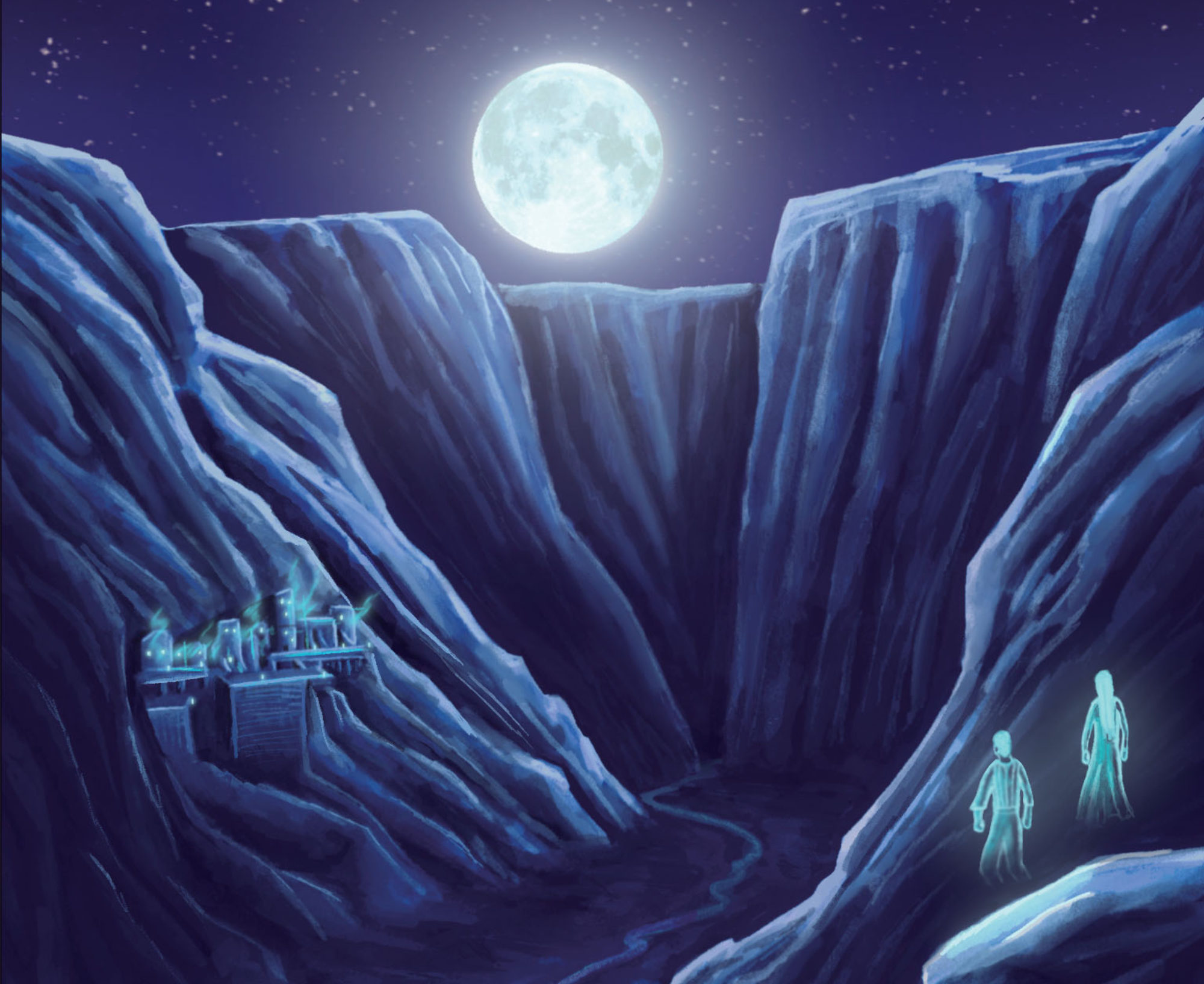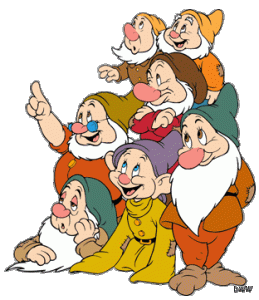Everyone has probably seen those “10 books that have stayed with me” posts on Facebook by now. I’m kind of sad that I haven’t been tagged yet, but I know when people try to think of their most literary friends, I don’t immediately come to mind. I love reading, but I’m not exactly what you’d consider one of them “literary types.” Plus, everyone knows at least three of my top ten books were written by Tolkien, and I guess that isn’t very interesting to some people. However, many of my favorite bloggers have been talking about books lately, and I want in on the fun!
We’ve already established that my top ten list would be a little boring and predictable, so I’m going to discuss my bottom seven. One of my favorite quotes from my dad is, “Life’s too short to read bad books.”
Facebook Data Science compiled the results of those “Ten Books” statuses, listing the top 100 books according to Facebook users. Tom and I read through this list together; while we were pleased to see that The Book of Mormon was #35, our reaction to much of the rest of the list was the following: “Really. Reeeaalllly. Really? REALLY?!” It quickly became clear that our idea of “good literature” doesn’t match up with that of the rest of Facebook. Most of the books I talk about in this post came from this or similar lists, and they’re all hailed as “great.”
1. The Great Gatsby, by F. Scott Fitzgerald
This was a school-inflicted experience, and it will probably be a school-inflicted experience for every kid from now until the Second Coming (after which I hope many of the books currently being produced by the Mormon Texts Project supplant some of these so-called “classics” in school curricula).
Objections
- I would summarize Gatsby this way: “It’s about horrible people being horrible.” This in itself isn’t a bad thing, but seriously, what is this book even about? Rich people having affairs? Something about the American Dream? A cautionary tale about going to Long Island? I just have no idea!
- The characters are unrelatable and unlikeable. By the end of the book, there wasn’t a single character I cared about. I was glad when people started dying, and I wished more of them would die. Hey, you might as well kill off the narrator—it’s not like he does anything at all.
- I wasn’t a fan of the heavy-handed symbolism. It was just too much. You couldn’t see the forest for the trees—and you couldn’t see the story for the eyes of Dr. T. J. Eckleburg.
Substitute
If you’re in the mood for reading about horrible people being horrible, try Wuthering Heights. This book, at least, has a plot.
2. Rebecca, by Daphne du Maurier
I can’t blame this one on school. I picked up Rebecca by myself after enjoying the black-and-white Hitchcock movie. I was looking for some good timesy Gothic romance, the Kindle version was only $5, and I wanted to use a Mrs. Danvers-like character in my NaNoWriMo book this year. Boy, was I in for an unpleasant surprise.
Objections
- I expected this book to be creepy and unsettling, and it was—but not in a good way. I felt a little bit depressed and skittish any time I picked it up. I couldn’t place it, but I felt like I was reading something immoral (other than the incident mentioned in the next bullet point). According to the afterword, it seems my subconscious was right. I won’t elaborate, but let’s just say I’m really bad at picking up on themes.
- [SPOILER ALERT] Maxim de Winter, husband of the narrator, never faces any legal consequences for murdering his first wife, the titular Rebecca. In fact, when the current Mrs. de Winter learns of this, her first reaction is, “Oh, how wonderful! Maxim isn’t still missing his dead wife! Now we can be in love forever and ever!” Yeah, until you both get to that lake of fire and brimstone. Hitchcock danced around this issue in the movie by having Maxim explain that he was about to shoot Rebecca, but then she fell over and hit her head and conveniently died. As implausible as that is, it’s better than a murderer getting off scot-free.
Substitution
If you’re looking for Gothic romance, stick with Jane Eyre, which is one of my favorites and won’t leave you feeling icky inside.
3. The Grapes of Wrath, by John Steinbeck
By the time we read The Grapes of Wrath in 11th-grade English, I was convinced that American literature and I would never be friends. There isn’t enough Mark Twain in the world to make up for all the authors like Steinbeck in our fair country.
Objections
- Everything Jim Casey says. He’s supposed to be the Christ-figure of the book, and I find that incredibly blasphemous. He’s a preacher who gives up his profession because, in addition to the fact that he has a disgusting habit of fornicating with young members of his congregation, he’s decided that there’s no such thing as sin, and that religion has no answers for people having hard times.
- Sadly, nothing in the above bullet point surprised me. Steinbeck was a dirty commie, and he couldn’t keep his destructive ideas out of his book. (I don’t like commies.)
- The ending. My goodness, was that really necessary?
- All the main characters are from Oklahoma.

Better dead than sooner red. Enough said.
Substitute
I really want to plug The Good Earth by Pearl S. Buck here. It tackles a lot of the same themes as The Grapes of Wrath: family relationships, gender, wealth and poverty, etc. In a way, it explores the opposite side of the “American Dream” (in quotes because it takes place in rural China): what do you do when you achieve it? Buck’s characters are engaging, and her writing is lovely—you almost feel like you’re reading Chinese. Why isn’t this one assigned in school?
4., 5., and 6. Anything by John Green (but especially Looking For Alaska, The Fault in Our Stars, and Will Grayson, Will Grayson)
None of these count as “classics,” but they’re popular enough and bad enough that I had to include them here. I could rant for hours about every terrible thing John Green has done. However, the only person contractually obligated to listen to said rant is Tom, so I’ll spare you the whole thing and just focus on the problems with his books. I can’t imagine any responsible parents letting their children read anything by John Green. Apparently he “totally gets what it’s like to be a teenager,” but if this is what teenagers are like, I don’t want my kids to be teenagers.
Objections
- The language in these books is quite bad.
- John Green frequently trivializes pornography, which is never, ever okay.
- He also romanticizes teen sex.
- All his characters are exactly the same: insufferable hipsters masquerading as nerds. Why should I read about the kind of people I go out of my way not to hang out with?
- This one is purely my problem, but I’ve realized I don’t like reading about teenagers unless they have magical powers and/or are trying to save the world. Yawn.
Substitute
There is plenty of good YA fiction out there. Put down TFIOS, and go reread Harry Potter. Read Allie Condie’s Matched series and learn something about game theory. Not a dystopian futuristic romance fan? I enjoyed the No Safety in Numbers series by Dayna Lorentz—it’s about being trapped in a mall infected with killer flu. In each of these books, stuff actually happens. Yay for YA!
7. Heart of Darkness, by Joseph Conrad
I can’t even come up with a bullet list for this. I really tried to read this book for senior English. Really. I tried everything. I summarized each paragraph with a post-it note. I read with the book in one hand and a printout from Sparknotes in the other. I read chapters out loud to myself. And yet, as early as a week after we’d finished the book, I realized I couldn’t remember anything about it. Conrad’s writing is just not my cup of tea (my dad feels the same way—ask him about Lord Jim sometime). Plus, he spends pages and pages talking about cannibals, but the cannibals never eat anyone! Talk about disappointing your reader.
Substitute
I vaguely remember that the story took place in Africa. If you want to read about Africa, I’d recommend Things Fall Apart by Chinua Achebe. It’s not great, but it taught me a valuable lesson that has stayed with me for years—yams are a man’s crop. That’s all you really need to know. Plus, Achebe isn’t a fan of Heart of Darkness, either, and called Conrad a “bloody racist” for writing it. I obviously can’t gauge Conrad’s racism one way or the other, but if the Yam Lord thinks he’s a racist, that’s good enough for me.
***
I’m not trying to say we shouldn’t read classic literature. I’m not even saying “DON’T READ THESE BOOKS!” (except for 4-6). What I’m really trying to say is that while many good books are immortalized as “classics,” not all “classics” are good books. There isn’t necessarily anything wrong with you if you made it through high school without enjoying everything (or anything) assigned in English class. It’s okay to be discerning, and it’s okay to disagree with those “100 Best Books of the Century” lists. Designate your own “classics.”
And hey—tell me why you love them! I love comments!






